DISCLAIMER
The following information on napping may or may not not work out for you. This depends on how you do it and other human factors (e.g, being too anxious to fall asleep). If you have to resort to these methods, make sure to understand what you are doing, what can happen and do it at your schedule’s risk.
Introduction
Science has never fully explained the science of napping. However, learning to strategically nap is key to maintaining a polyphasic pattern, to not waste away all the acquired napping skills. To take advantage of these sleeping strategies, you should only carry out these napping methods in this page after the adaptation is complete. Otherwise, this will most likely set back the adaptation progress when sleep times are different from the designed schedule.
However, napping outside of the schedule may also prevent a bigger oversleep later on if you have been skipping sleep; this comes down to personal choice, but skipping sleep is still generally a better option to avoid negatively affecting the sleep onset of the next sleep.
Certain groups have experimented with these napping patterns in the past. In addition, multiple research articles have also included relevant data. If done properly, this will create new possibilities to better maintain an adapted polyphasic schedule in real-world scenarios rather than reverting to monophasic sleep. However, there are associated risks, as always.
- A messy circadian rhythm
- insomnia at night
- Productivity decline
- More overall fatigue
- Ultimately, a ruined adaptation state as sleep quality deteriorates from extreme changes in sleep times.
Because of all these factors, you should utilize these practices only sparingly.
Prophylactic napping
Important note
This napping method should only work well after the adaptation phase is complete. Doing so during adaptation will mess up scheduling and result in a chaotic sleep schedule. Inexperienced polyphasic sleepers who have a first successful adaptation should still be consistent with sleep times. Then, slowly flex their sleep blocks by minor margins to have a feel of a flexible sleep schedule.
Definition and Use
This napping behavior is stocking up sleep before an extended period of time that requires the sleepers to be awake1.
- Getting some sleep before this wakeful period to enhance performance, retain productivity during the wake period until the next sleep session.
- The prophylactic sleep session does not necessarily have to be a nap. A core sleep is applicable as well.
- Skipping sleep and staying awake through the whole extended period not only can lower mental focus and clarity and affect individual performance on the task but also can drastically increase the chance to oversleep in the next sleep. This would then break down the stability of the sleep pattern.
- Adding short naps is more desirable then adding cores, since they are going to destabilize schedules to a lower degree.
Requirement
Prophylactic sleeping does not warrant sleep reduction compared to the current sleep hours on adapted schedules.
- Stocking up sleep (e.g, sleeping for 10h for a day and 2h the next day) can end up wrecking the whole schedule and reset the adaptation process entirely.
- On an adapted schedule, sleepers only get sleep pressure to rise certain periods of time before their upcoming sleep (~30-40 minutes before a nap or core sleep). Hence, sleep times can only move around to a certain extent to adjust the remaining sleep sessions on the schedule.
- Most importantly, not being able to actually fall asleep in the designed prophylactic sleep will not boost personal alertness during the long wake period. For this reason, it is necessary to properly time the prophylactic sleep to get actual sleep. The most ideal conditions for prophylactic sleeping to work are:
- Pre-existing sleep deprivation conditions
- Sleep pressure at the end of a BRAC to facilitate falling asleep.
Example 1: Reducing sleep schedule (SEVAMAYL)
An adapted SEVAMAYL sleeper with the following sleep schedule:
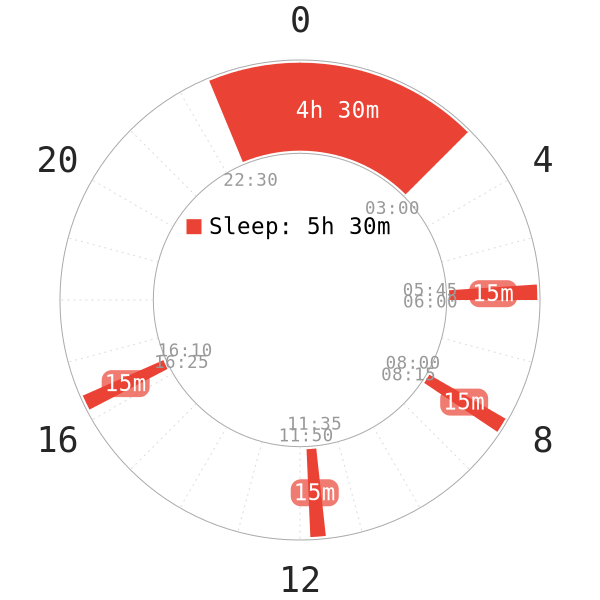
This is a standard SEVAMAYL variant on normal days. On a hectic day that forces the sleeper to stay awake from 9:30 AM to 6 PM, the schedule can become:
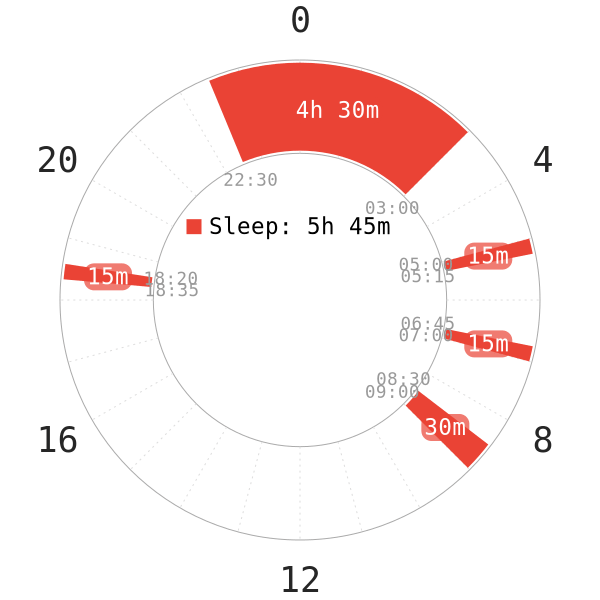
- The sleeper adds one 30-minute nap (a Protracted Nap) to the schedule.
- The core sleep is slightly adjusted (30 minutes in advance) to accommodate the extra naps.
Adapted SEVAMAYL sleeper Gosugenji in the community (~6 months adapted and counting) has succeeded with this method. Getting REM sleep in the naps is not an imperative requirement to sustain alertness into the day. Being able to fall asleep in the naps to get NREM2 is enough to gain certain wakefulness in preparation for the long wake period ahead.
The 30-minute nap was around the REM peak to strategically facilitate falling asleep and increase the chance of getting more REM sleep. Thus, this sustains wakefulness much better than a pure NREM2 nap. Due to the flexible nature and there is no limit on the number of daily naps on SEVAMAYL, adding naps or modifying nap duration does not alter the basic premises of the schedule.
Example 2: Reducing sleep schedule (E3-extended)
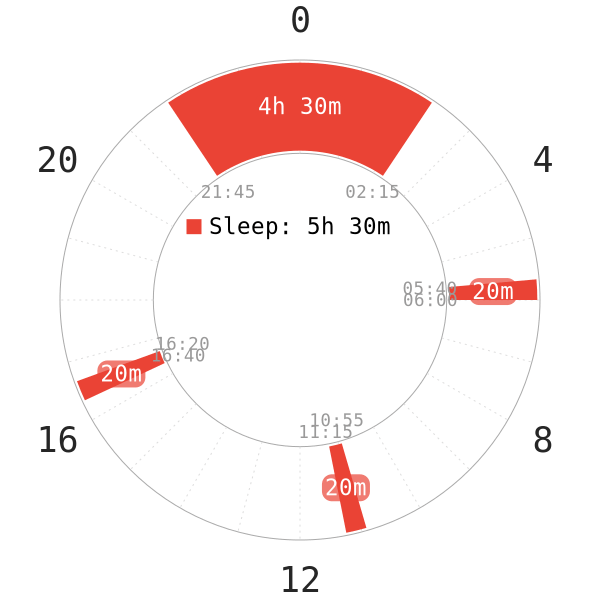
This is a variant of E3-extended (5.5h) that works (based on Allyzor, an adapted member of the community). On regular days, sleep is distributed throughout the day, with a fixed core sleep of 4.5h and 3 20-minute naps. However, in the event that she has to remove the noon nap and has to stay awake from 9 AM to 4:30 PM, the schedule can become the following form:
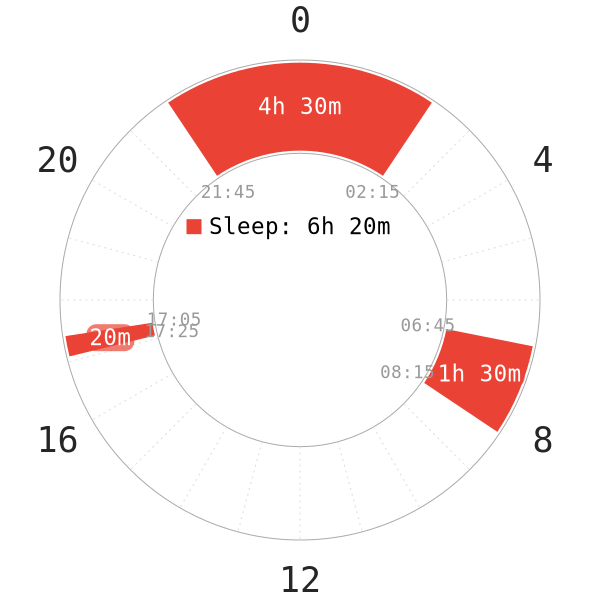
- The schedule takes the structure of DC1-extended, with 2 cores and 1-20 minute nap.
- However, Allyzor, who has been adapted to E3-extended for 2 years only resorted to this method after adapting to E3-extended. Still, she only turns a nap into a 90-minute sleep on very rare occasions.
- Then, she would return to the base E3-extended as quickly as possible.
The premise is the same as before. Stocking up the 90-minute sleep before the long wake period and place a nap afterwards. By delaying the first nap, sleep deprivation ensues as the body is usually used to sleeping at an earlier time. A long-term adapted sleeper, therefore, can manipulate their sleep timing to fit into their daily schedule to some extent without ruining the schedule’s rhythm.
Example 3: Non-reducing schedule (Biphasic-X)
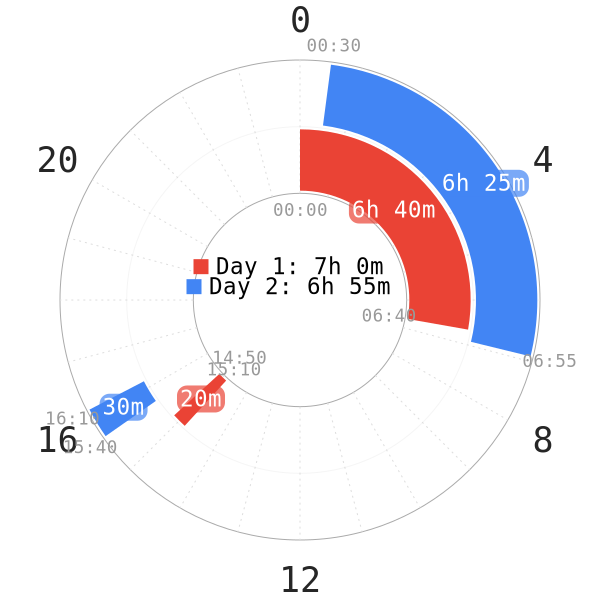
This Biphasic variant is based on GeneralNguyen’s schedule. It does not aim to reduce total time spent in bed. On regular days, the schedule has a long core sleep at night and a nap of varying duration in the day (noon-afternoon range). On busy days that allow no naps from after 11 AM to the time of the night sleep (~13h with no sleep), the schedule can take the following form:
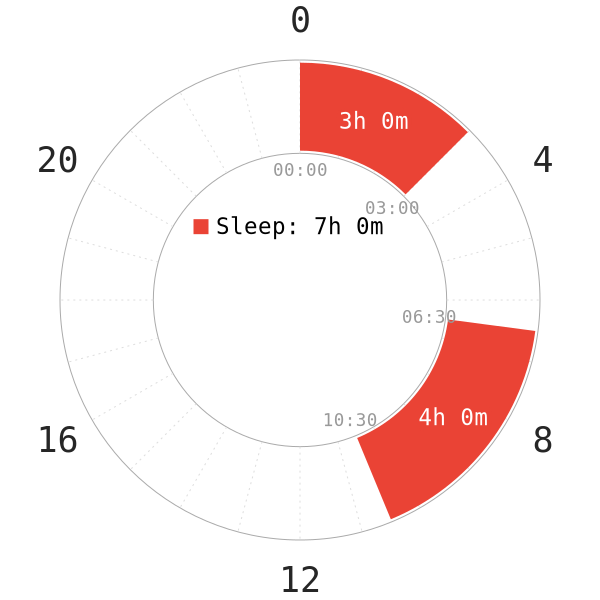
- The main core sleep splits into two smaller cores.
- The second core is very close to the long wake period, in the form of Segmented sleep.
- By sleeping only 3h for the first core, sleep pressure temporarily rises. Thus, sleeping again around dawn becomes easy thanks to REM pressure that time.
The main purpose is to wake up at a later time than usual to gain more alertness before the long period that does not allow any sleep. Despite taking on the form of Segmented sleep, this does not violate the structure of the whole sleep schedule. It allows all forms of Biphasic sleeping, although consistent E1/Siesta form is preferable.
Prophylactic Sleep Strategies
Besides an adapted state, it is safe to stay adapted for some more days before resorting to this method. There are a lot of ways to pull off a prophylactic method as demonstrated by 3 aforementioned examples. However, the method would benefit flexible schedules the most.
- Rigid schedules require another period of being adapted to flexing (aside from the adapted state to the fixed base) for the body to get used to slightly varying sleep times from day to day. This would facilitate falling asleep at certain hours in prophylactic mode.
- Theoretically speaking, all schedules (except fixed nap-only schedules like Uberman and Dymaxion) do offer some potential for prophylactic tendency after adaptation. However, how much potential is unknown currently.
- A prophylactic sleep can have various duration depending on personal sleep schedule. Feeling drowsy and sleepy is a solid indicator to prepare for a prophylactic sleep.
- Regardless, it should only be done rarely to avoid hurting a sleep schedule’s structure.
Replacement napping
Important Note
Similar to prophylactic napping, you should not use replacement napping too often, even after a solid adapted state. The reason why it is less popular than prophylactic napping is because of its mechanics.
Definition and Use
Replacement napping refers to napping a response to subjective fatigue, mainly based on the reduction of night sleep duration1. The reduction in night sleep duration is the result of a lot of possible factors. Examples include:
- Interrupted sleep
- Inability to go back to sleep after waking up (WASO)
- Premature wakes (early wake-up time before the desired sleep duration.
Thus, replacement naps often have longer duration than a regular power nap (at least 60 minutes). By definition, the build-up of sleep deprivation resolves after a sleeper takes a replacement nap during daytime hours. The most common type of sleep pattern to make use of replacement naps is Biphasic sleeping. If the nap has the correct timing, it does not seem to affect night sleep quality1.
Utility
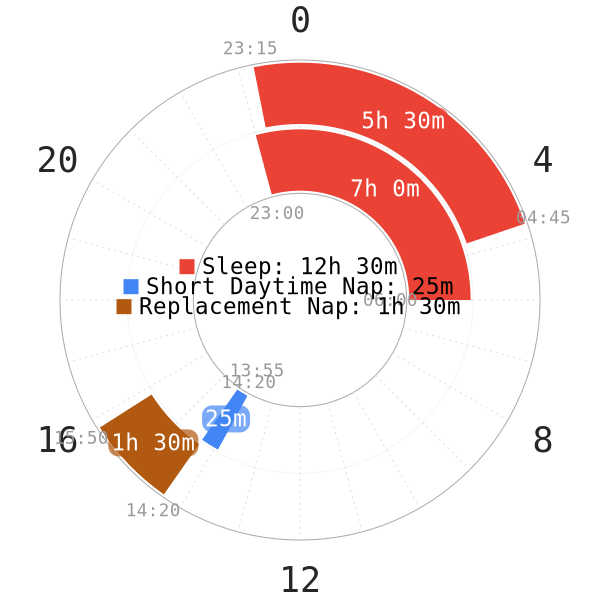
Similar to prophylactic sleeping, replacement naps seek to improve productivity and mental focus with a longer nap duration that contains vital sleep stages. This would be helpful to sustain alertness for the following hours. Regarding the efficacy, frequent nappers feel less tired and more alert after taking the nap2. However, the experiment was only limited to non-reducing biphasic type with the replacement naps of 60 minutes long. In addition, this is NOT a recommended nap duration. Sleep inertia lingered in all subjects upon awakening.
In the context of polyphasic sleeping, replacement naps may not be appropriate to maintain a proper adaptation to rigid schedules.
- Lengthening naps to a full cycle during sleep-deprived adaptation state counts as an oversleep and will reverse adaptation.
- After adaptation, having an occasional replacement nap in case of reduced nocturnal sleep is tolerable.
- Abusing this napping strategy is still not recommended; this will undo sleep repartitioning and reset adaptation.
- Similar to prophylactic sleeping, it is also highly questionable that replacement naps can be occasionally taken on nap-only schedules. This is because adding a core to these nap-exclusive schedules will reverse adaptation entirely.
Main author: GeneralNguyen
Page last updated: 28 December 2020
Reference
- Stampi, Claudio. Why We Nap : Evolution, Chronobiology, and Functions of Polyphasic and Ultrashort Sleep. Birkhauser, 2014.
- Evans, F. J., et al. “Appetitive and Replacement Naps: EEG and Behavior.” Science (New York, N.Y.);197(4304):687–689. doi: 10.1126/science.17922. [PubMed]
